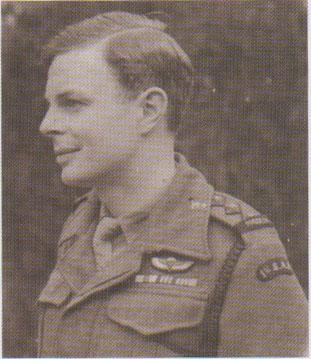I neglected to mention in the "Quest for sources" post that I am also in dire need of a WWII-vintage copy of instructions for manipulating a theodolite. Even better would be an example of a period of instruction that may have been given to LRDG navigators of that era.
Although the equipment has changed significantly, surveying principles have not, so I believe that readers would gain significant insight from how a navigator like Sadler achieved his plot accuracy.

Subscribe to:
Post Comments (Atom)
2 comments:
Hi,
Alas, I have nothing for you with respect to Theodolite procedures. ;-)
That having been said, I was wondering if there are contacts out there who might be able to help you, and/or prepare the ground for your Imperial War Museum trip. Ian Beckett was at MCU a few years ago, I think, and would have fallen into that category. I don't know if there are other British military historians there now, but even if there are not, maybe some preparatory emails to military historians might be useful? Similarly, perhaps SOCOM historians would have contacts in England who would know of archives and people familiar with LRDG/SAS? (Apologies if this has all crossed your mind already.)
With respect to "What would ordinary or potential readers want to know?" I've thought that one over the past few days, and sadly, nothing pops into my head.
[The only real one I've thought about is gentleman soldiers - I know nothing about Mike Sadler (yet), but I'm guessing he had some civilian job or hobby in the 1930s that prepared him for desert warfare and navigation? How did he acquire his navigation skills, what precisely was he doing prior to WW II, and how did he enter the British Army and make sure his skills got used? ]
But I don't think that bodes ill for your project. It probably results more from massive ignorance on my part of the LRDG/SAS in this period. Beyond that, though, at the risk of sounding overly earnest, I tend to think anything - certainly with respect to WW II actions in the desert - can be made interesting. I'd poke around, find what's out there, think about what seems interesting to you, and then proceed to try and tell it.
Hope the project is going alright, and hats off for proceeding with it while already having a day job.
Best
Jeff
[JW from SWJ - we've PM'd recently]
As far as astral navigation goes, it's childsplay. I was doing it in the sub arctic in the mid 1990's whilst doing oil & gas exploration (seismic surveying). All you need is a rough idea of where you are, an accurate watch (chronometer) an almanac and of course, a theodolite. With the older theos one needs to do face left and face right readings etc but we used old and new technology to find out locations to within metres. One man reading the teo, an almanac on the laptop and a sat' 'phone listening to the atomic clock in colorado. Hey presto !! Same rules apply to using sextants too. Dave
Post a Comment